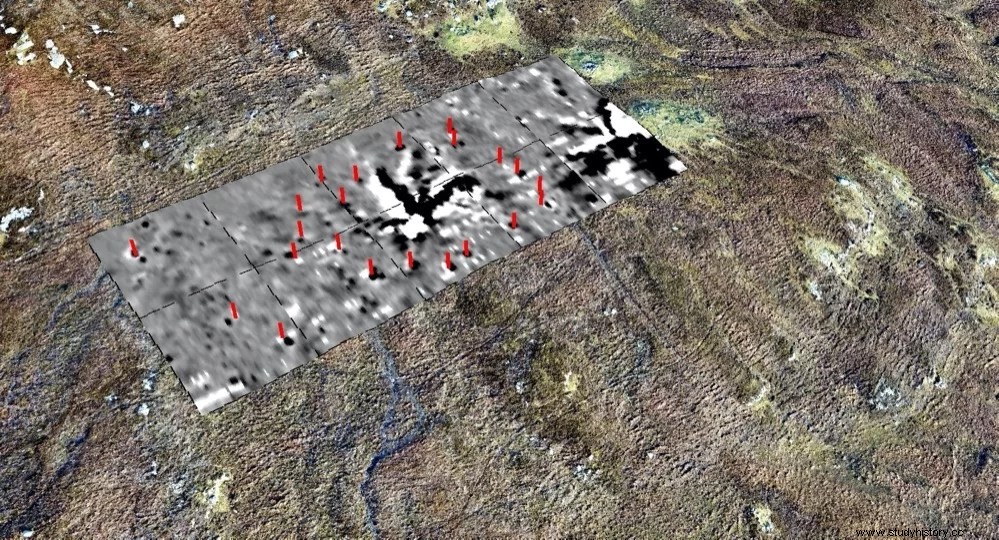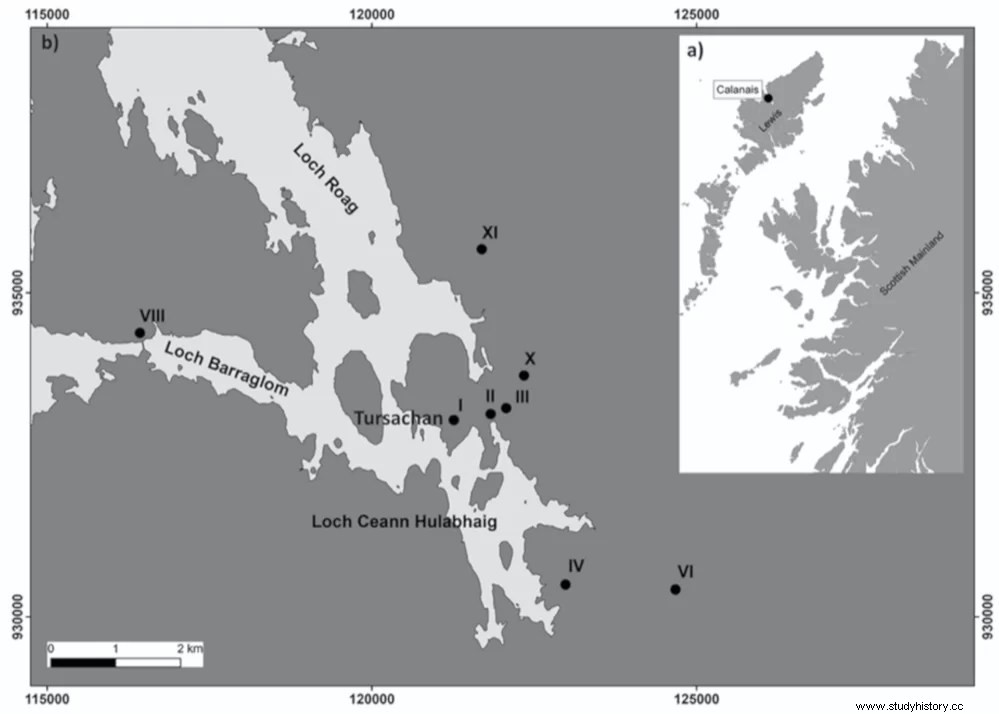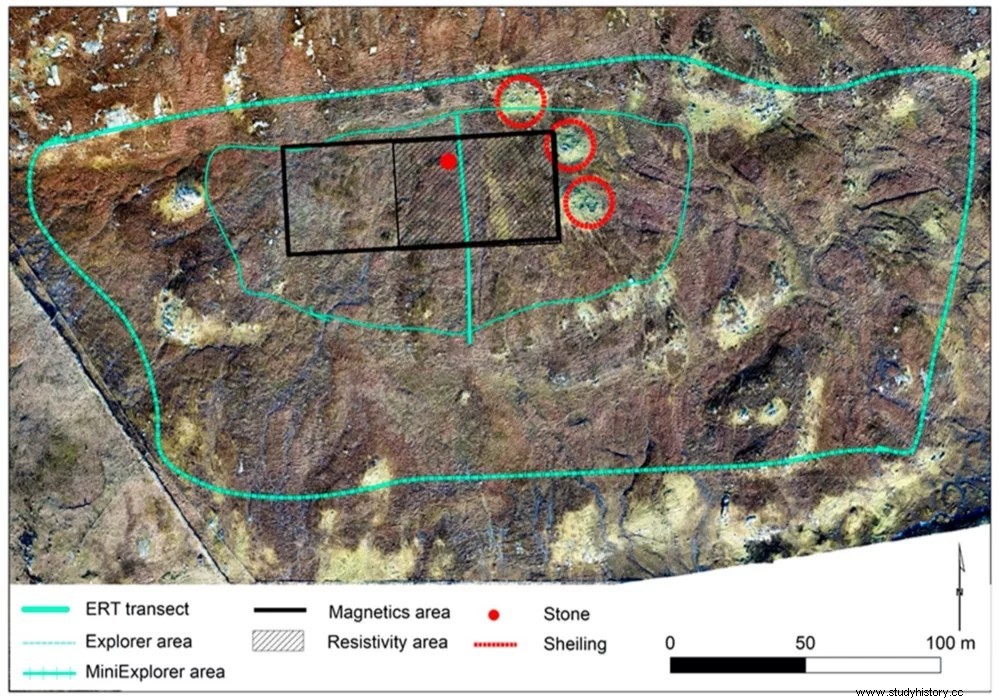New evidence of massive lightning strikes at the center of a stone circle in the Outer Hebrides may help clarify why these monuments were created thousands of years ago.
The Calanais Virtual Reconstruction Project, a joint venture led by the University of St. Andrews with the Urras nan Tursachan and the University of Bradford, has discovered a potential link between ancient stone circles and the forces of nature.
While studying the prehistoric Tursachan Calanais , the main Calanais stone circle on the Isle of Lewis, the project team surveyed nearby sites via satellite to find lost circles buried under peat.

One of the rarely visited sites known as Site XI or Airigh na Beinne Bige , now consists of a single standing stone on an exposed hillside overlooking the great circle.
Geophysics revealed that not only was the stone originally part of a circle of standing stones, but there was also a massive star-shaped magnetic anomaly at its center – either the result of a single large impact or many smaller impacts. of lightning in the same place.
Project leader Dr Richard Bates, from the School of Earth and Environmental Sciences at the University of St Andrews, said:Such clear evidence of lightning is extremely rare in the UK and the association with this stone circle is unlikely to be coincidental .

We don't know if the strikes from Site XI were focused on a tree or a rock that is no longer there, or if the monument itself attracted the strikes . However, this remarkable evidence suggests that the forces of nature may have been intimately linked to the daily life and beliefs of the island's earliest farming communities .
The researchers were also able to virtually recreate another nearby circle, with the help of the Smart History team at the University of St. Andrews School of Informatics.
Known as Na Dromannan , careful scanning of the stones made it possible to build a full three-dimensional model that allowed the passage of the sun and moon around this circle to be traced for the first time in four millennia.

Dr Bates added:For the first time in over 4000 years the stones can now be seen and 'virtually' walked over . Everyone will be able to visit this remote site and get a real idea of what it was like right after it was built. We've only just scratched the surface of this landscape and we may already have an idea of what might be buried out there waiting to be discovered.
The team hopes to return to Lewis next year to carry out further studies both on land and in the waters around the Tursachan in Calanais , where the ancient landscape has been flooded by rising sea levels.
According to Dr. Tim Raub, of the School of Earth and Environmental Sciences at the University of St. Andrews, this evidence is rare because lightning strikes take place along the 'layer 'top of the Earth's surface. The clarity of the impact suggests that we are looking at events before the site was engulfed by peat, more than 3,000 years ago.
Dr. Alison Sheridan, Director of Urras nan Tursachan , the Calanais-based charitable foundation that was involved in this research, said:This is an exciting discovery that helps us get into the minds of the people who built the stone circles in and around Calanais. Much remains to be discovered about the so-called 'satellite' circles of Neolithic Calanais and this provides an important first step. Na Dromannan modeling also helps us investigate whether this circle was astronomically aligned.
